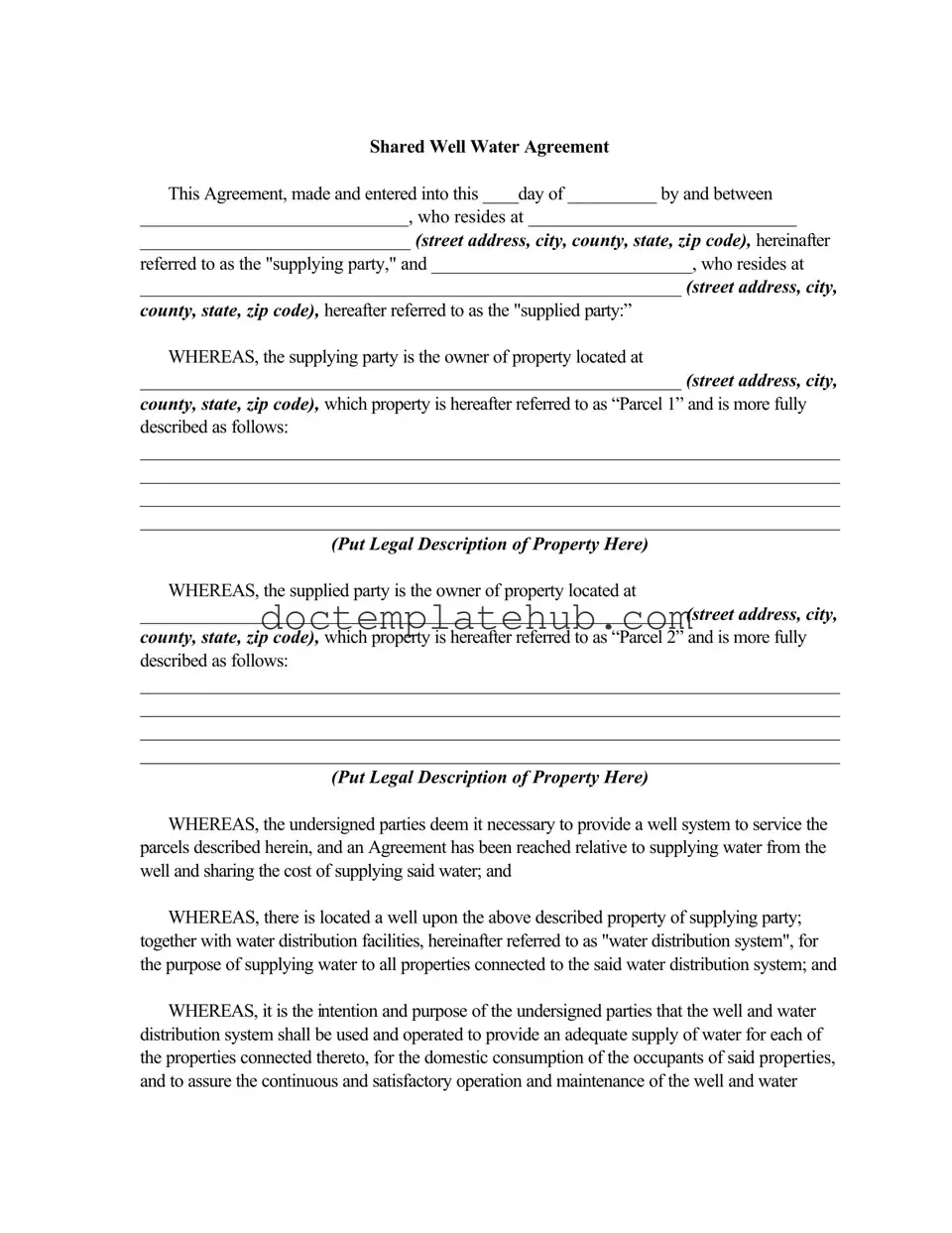What is a Shared Well Agreement?
A Shared Well Agreement is a legal document that outlines the rights and responsibilities of two or more parties who share a well water system. It details how the water will be used, the costs associated with maintaining the well, and the obligations of each party regarding water usage and payment. This agreement ensures that all parties understand their rights and can access water for domestic use from the shared well.
Who are the parties involved in a Shared Well Agreement?
The parties involved are typically the "supplying party," who owns the property with the well, and the "supplied party," who benefits from the water provided by the well. Each party's property is referred to as Parcel 1 and Parcel 2, respectively. The agreement clearly identifies both parties, their addresses, and the properties involved.
What are the main responsibilities outlined in the agreement?
Each party is responsible for paying an annual fee for the use of the well and a share of the maintenance costs. The supplying party and the supplied party typically split these costs evenly. Additionally, both parties must maintain the water pipes serving their respective properties and promptly address any necessary repairs or emergencies that may arise.
Can the supplied party use water for purposes other than domestic consumption?
No, the agreement specifically states that the water drawn from the well is for domestic use only. This means it cannot be used for filling swimming pools or other non-domestic purposes. This restriction helps ensure that the well can adequately supply water for the households relying on it.
What happens if the well becomes contaminated?
If the well becomes contaminated and no longer provides safe water for domestic use, or if another water source becomes available, the rights and obligations under the Shared Well Agreement will cease. This means that the parties will no longer be bound by the agreement, and they can seek alternative water sources.
How are disputes resolved under the Shared Well Agreement?
Any disputes arising from the Shared Well Agreement must be resolved through binding arbitration. Each party will select an arbitrator, and those arbitrators will then choose a third arbitrator to help resolve the issue. This process is governed by the rules of the American Arbitration Association, ensuring a fair and impartial resolution.
Can the agreement be terminated?
Yes, the agreement can be terminated. If a party wishes to end their participation, they must file a written statement of termination with the appropriate county office. Once terminated, the party will no longer have rights to the well and must disconnect from the water system. However, the costs associated with disconnection will be the responsibility of the terminating party.
